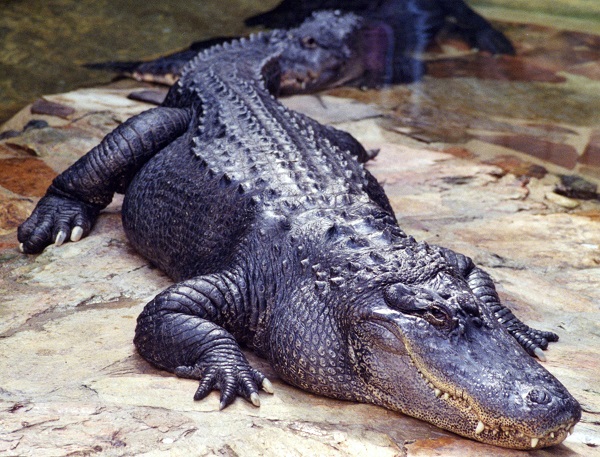
The American alligator (Alligator mississippiensis) stands as a charismatic and formidable reptile, often symbolizing the diverse wildlife and natural habitats of the southeastern United States. This apex predator plays a crucial role in maintaining the health and balance of its ecosystem, which extends far beyond its fearsome reputation. While it might seem counterintuitive, the implementation of a well-regulated hunting season for American alligators is essential to manage their populations and sustain the delicate equilibrium of their habitat.
Ecological Significance
Native to the southeastern United States, the American alligator is a keystone species, exerting a significant influence on its ecosystem. As a top predator, it plays a pivotal role in controlling the populations of other species within its food web. Alligators predominantly prey on fish, birds, amphibians, and small mammals, helping to regulate these populations and prevent overgrazing or over predation further down the trophic levels.
Alligators also create and maintain important habitats for numerous other species. Their nesting sites provide shelter for birds and small mammals, while their burrows offer refuge for aquatic animals during dry periods. Additionally, the wallows and scrapes alligators create inadvertently help create diverse wetland ecosystems, influencing vegetation growth and providing ideal breeding grounds for many species.
Population Management Through Hunting
While alligators are vital for maintaining ecosystem balance, their populations can become problematic if left unchecked. Unregulated alligator populations can lead to various ecological imbalances, including overconsumption of prey species, habitat degradation, and conflicts with human activities. These issues can disrupt the delicate harmony of the ecosystem and lead to negative cascading effects on other wildlife.
To address this challenge, a carefully managed hunting season for American alligators becomes essential. A legal hunting season allows wildlife managers to control alligator populations by carefully selecting individuals for harvest based on size, sex, and overall population health. By setting quotas and regulating hunting methods, authorities can ensure that alligator numbers remain within sustainable levels, preventing potential habitat degradation and over predation scenarios.
Balancing Conservation and Utilization
Critics of regulated alligator hunting may question its ethical implications. However, a well-managed hunting program can contribute to conservation efforts. Revenue generated from hunting licenses and permits can fund research, habitat restoration, and conservation projects aimed at protecting not only alligators but also their entire ecosystems. Moreover, legal hunting channels can help reduce illegal poaching, which can pose a threat to alligator populations.
Conclusion
The American alligator’s significance within its ecosystem goes beyond its role as a fearsome predator – it is a vital component of the intricate web of life in the southeastern United States. Its ability to maintain population balance and shape habitat structure highlights its importance in fostering a diverse and healthy environment. The implementation of a regulated hunting season for alligators, while initially counterintuitive, is a critical tool for wildlife managers to ensure sustainable populations and promote the overall well-being of both alligators and their habitats. Through a delicate balance of conservation and utilization, we can secure the future of the American alligator and its role in maintaining the vibrancy of its ecosystem for generations to come.
14 Fun Facts About the American Alligator
Ancient Relatives
American alligators are living dinosaurs, having existed for more than 150 million years. They’ve survived through multiple mass extinctions.
Size Matters
Male alligators can grow up to 13-15 feet in length, while females are generally smaller, averaging around 9 feet. The largest recorded alligator was over 19 feet long!
Cold-Blooded Survival
Alligators are ectothermic, meaning they rely on external sources of heat to regulate their body temperature. During cold months, they enter a state of dormancy called brumation, often buried in mud.
Powerful Jaws
Alligators have incredibly strong jaws, capable of exerting immense pressure. However, their jaw muscles for opening are relatively weak, and a simple rubber band can keep their mouth shut.
Toothy Grin
Alligators have between 74 to 80 teeth in their mouth at any given time. They continuously grow new teeth to replace the old ones throughout their lives.
Mating Rituals
During mating season, male alligators produce deep, rumbling bellows to attract females. These vocalizations can be heard from a considerable distance.
Nesting Habits
Female alligators construct large mounds of vegetation and soil as nests, where they lay their eggs. These nests can reach heights of up to 3 feet and help regulate temperature for the developing embryos.
Caring Parents
Female alligators are attentive mothers. They guard their nests and often assist the hatchlings in breaking out of their eggs. After hatching, the mother carries the babies to water in her mouth and protects them for several months.
Ecosystem Engineers
Alligators play a critical role in shaping wetland habitats. Their wallows and burrows create depressions that collect water, benefiting other wildlife during dry spells.
Adaptable Eaters
Alligators are opportunistic feeders, consuming a wide range of prey including fish, birds, mammals, and even smaller alligators. They have a “sit-and-wait” hunting strategy, using stealth and patience to catch their meals.
Saltwater Survivors
While mostly found in freshwater environments like swamps, marshes, and rivers, alligators are also capable of surviving in brackish and saltwater areas, such as coastal marshes and mangrove swamps.
Sensory Superstars
Alligators have excellent senses, with acute hearing, sharp vision, and a specialized sense of smell. They can detect vibrations in the water, helping them locate prey even in the dark.
Rapid Growth
In their early years, alligators grow at an astonishing rate. A hatchling can double in size during its first year of life.
Conservation Success
American alligators were once listed as a threatened species due to overhunting, but conservation efforts have led to their recovery. They were removed from the endangered species list in 1987, showcasing successful conservation management.
Related Articles & Free Email Newsletter Sign Up
The Remarkable Rise of the American Black Bear Population
The Reticulated Python: A Majestic Serpent with Ecological Consequences
Wild Boar in America: History, Impact, and Conservation Efforts


Comment here